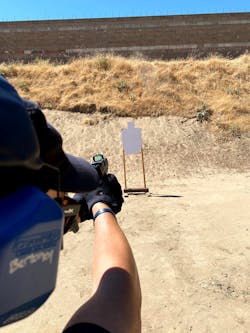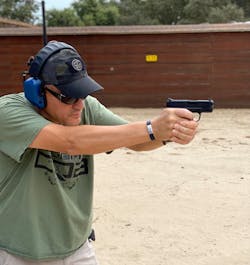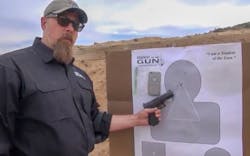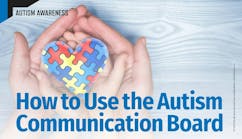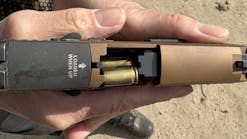Three Skills Every Officer Should Have
Most officers across the country are constantly training. Some of it is formal, some informal. There are many skills, but the three general skills described here should be in every officer’s skillset. These three skills are (1) The ability to deliver a headshot at 7 yards, (2) Negotiate and communicate while staying on target, and (3) Operate with elevated vital signs.
1. Headshot at 7 yards
The ability to deliver a headshot is non-negotiable. Every law enforcement officer must be able to deliver a headshot on demand. I am talking about being able to hit anywhere on a head sized target, or about a 4” circle at 7 yards.
This requirement does not come with the premise that some day, during an officer’s career, he will have to deliver a headshot. That’s silly. It comes with the same logic as the classic elephant joke:
Hank: I’d like to be able to afford to buy an elephant.
Frank: Are you silly? What on earth would you do with an elephant?
Hank: I didn’t say I wanted to buy an elephant. I said I wished I could afford to buy an elephant.
Using this same logic, the endgame is the requisite skill, not the task itself.
There are several very good reasons why this should be a standard, but first it should be noted that I did not indicate a time restraint. I encourage the agency that adopts this standard to incorporate a time requirement, but first the ability to shoot the headshot needs to be a starting point.
What does on demand mean? This means that officers should be able to walk on to a range without any kind of warm up, draw and fire one shot into a head-sized silhouette. The time standard should be set by the agency. The pass/fail standard is 100% hits, on demand.Why the headshot?
However one calls it, “sinus cavity shot,” “hostage rescue shot,” or “headshot,” the purpose is the same. The goal is to cause an immediate shutdown. Headshots are likely fatal, but the purpose is to stop the suspect immediately, because what they are doing poses a high degree of risk to another, and stopping them gradually will increase this risk.
The headshot is used when the situation requires immediate incapacitation. Examples of this need include a person holding another hostage where successful negotiation is unlikely and they are an immediate threat to the hostage. Holding a gun at a hostage’s head is a concrete example. A person approaching others with a device, such as an attached explosive, would need to be incapacitated to stop their progress.
Immediate incapacitation only occurs when the parts of the brain that control voluntary movement is shut down instantly. Ideally, if a person holding a hostage has their finger on a trigger, the shot will cause a complete disruption. That is, a miss does not cause an involuntary hand squeeze, and subsequent trigger pull. I’m not a neurologist, so I don’t have any insight here, except my training in targeting. I have been trained to aim for a “T” formed by the pupils and the bridge of the nose. Theoretically, if one shoots a suspect in the face, head on, and the bullet enters horizontally, the result is an immediate shutdown. If the suspect had his finger on the trigger, they won’t press it.
This is an extremely difficult shot, and even more difficult on a moving target. It is a standard towards which to practice, but the 4” at 7 yards should be what every officer can do, with any gun they carry. This is also one method I use to evaluate my carry option. If I cannot keep it in a 4” circle at 7 yards, I do not carry the gun.
How to practice
I use a simple drill to practice headshots. I shoot a “Mozambique”, which I often call a “Failure drill.” The name “Mozambique” is attributed to Col. Jeff Cooper, one of the most influential firearms experts in this century.
I don’t use the exact drills the Great Col. Cooper did, but they agree with the intent of the training. It is a failure drill because the two shots to the torso, which should be fired as a controlled pair, failed to neutralize the threat.
Start at 7 yards. Draw and fire a controlled pair of rounds into the center mass of the target. Assess the target. Shoot the headshot. The cadence of the controlled pair should be fast. The officer should slow down to line up the headshot. We use a shooter/coach relationship, where the coach arbitrarily calls “Failure!” to initiate the headshot.
Even the pocket gun an officer carries off duty should be able to deliver a headshot. I often get range time that includes shooting headshots while running at the target, drawing from a seated position, and turning and shooting.Get serious
My friend Paul Markel takes shooting deliberately and accurately a step further. He created the #CellPhoneChallenge, and I encourage every serious shooter to participate. Here are the instructions:
Here’s how to take the challenge:
- Go to the Range with your cellphone, a handgun, and a sandwich baggie.
- Turn on the camera of your phone, place your phone into the baggie, and seal it.
- Staple it to a cardboard silhouette Target, 3” from the head.
- Stand 5 yards back.
- Pump 1 full magazine from your handgun into the head of the target.
- Retrieve your (hopefully un-shot) phone from the target.
- Upload the video to your favorite social media site or YouTube, using the hashtag #CellphoneChallenge
- Be proud of yourself!
The truth is, if a person cannot competently shoot past their (precious) cell phone, they won’t be able to make a hostage shot either. That is, it requires both skillset and mindset and the financial stress adds realism.
2. Negotiate, communicate while staying on target
Contrary to what the media is trying to sell to the general public, we already understand the value of minimum enforcement and de-escalation. Also contrary to what they are trying to sell, pointing a firearm and de-escalation are not necessarily mutually exclusive. That is, during my career, I can think of dozens of times where I had to communicate and negotiate while pointing my gun at someone. The goal is to complete the task without a tragic ending.
The skill to negotiate, communicate, and be prepared to shoot involves a mental process that can only be described as divided attention. It is an acquired skill, and it must be practiced in order to re-allocate the officer’s mental resources.
In order to negotiate at gunpoint, officers should initiate and maintain contact with cause-and-effect language and plosive terms.
Use of plosives
A plosive is a consonant sound made by the stop and restart of airflow. There are three basic kinds of plosives; bilabial, lingua-alveolar, and lingua-velar. I usually refer to them by what they do, as my memory of these terms fails me. Bilabial plosive is the sound made by stopping air by the lips (thus bi-labial). These sounds are formed when a word has “P” or “B”, as in “police” and “back”. A lingua-alveolar plosive is formed by the tongue (lingua) and the alveolar, which is the ridge area behind the front teeth. This is the “T” sound or the “D” sound. A lingua-velar plosive is formed by back of the tongue and soft palate. This is the “G” or the “K” sound.
Here’s the rule: When seeking immediate compliance, use words that begin with plosives.
The psychology is simple, and very complicated. The brain perceives the plosive as abrupt. That is, if the sound itself generated a meaning, without the vocabulary, a plosive would gather more attention than an affricate, which is an interrupted airflow that has a release, like the “S” sound. The psychology part is not necessarily a rule, but its application to law enforcement is self-evident.
Officers should use “Get down,” rather than “Stop, or I’ll shoot!”
Do not use “Stop!” or “Show me your hands.” Not only are these tactically unsound (“I showed the officer my hands, but I had a gun in it”) but their lack of clarity can delay the desired response.
Cause and effect language
Cause-and-effect language is both legally defensible, and appropriate for officer safety. The premise for cause-and-effect language is, “If you do this, I will be forced to do this.” The best example for this is, “Don’t make me shoot you.” Notice that this statement also begins with a plosive.
How to practice
Range day sessions must include adding commands while shooting. It does not need to be in every range exercise, but it should be a pervasive practice. This should be a requirement for both training and qualification. Like all other training events, the use of verbal commands should be part of the (discoverable) training record.
3. Ability to operate with elevated vital signs
A few years ago, I was tasked with improving our military shooting team’s combat shooting scores for a competition. I know that the competition sounds like some kind of tough match, but it was a handgun course that consisted simply of rotating, timed, targets fired from a distance that could be considered challenging.
When the commander assembled his shooting team and asked me what my plan was for score improvement, I pointed to the troops and said, “Follow me.”
I started running. After being taken off guard a little, a couple of the troopers caught up to me and asked me what I was doing. I ran them through the woods a little, then returned to the range after a little less than a mile. I issued ammo, and had them fire their usual shooting routine.
For clarification, any one of these soldiers could have beaten me in a foot race, short or long distance.
Their scores were horrendous. I fired a few strings, and my scores were better than theirs. I told them that they just experienced normal response to the high stakes of competition shooting. The difference was the fact that I trained to shoot well when the blood was pumping, which, from now on, was one of the training goals I gave them.
They did very well that year. I shot a few matches with them, and managed to do well myself.
A person’s vital signs: heart rate, respiration, body temperature, and blood pressure, are indicators of exertion or injury to the body, which includes illness. When a person exercises, all of these things increase. Exerting the body in a strategic manner is called exercise.
Exercise is inoculation against stress, increases survivability, and reduces depression. For the law enforcement field, it is critical. Any kind of exercise is good, but the emphasis here is training on the range. That is, one must do shooting training that is physically demanding.
How to train
Any exercise that gets the heart pumping more will have benefits, but my recommendation is to do a variety of things. Weight training increases core strength, running, cycling, or similar activities increases endurance. Since officers often go from sitting to sprinting, I recommend something that stresses the body like CrossFit. Pick a reliable system of martial arts and stick with it.
Years ago, I lacked confidence in my handcuffing. I went to a martial arts master and asked if he could help. I still train with him, many years later. We do a style that has elements of small circle jujitsu, and I’m very good at handcuffing.
There’s no reason to give a scientific explanation here, or approach this in a scientific manner, except that one should consult their medical professional before starting an exercise program. The simple task is to get the heart pumping in order to have more well-rounded training.
There are plenty of other skills that an officer should have, but these three should set a foundation. Keep training, and stay safe.

Officer Lindsey Bertomen (ret.), Contributing Editor
Lindsey Bertomen is a retired police officer and retired military small arms trainer. He teaches criminal justice at Hartnell College in Salinas, California, where serves as a POST administrator and firearms instructor. He also teaches civilian firearms classes, enjoys fly fishing, martial arts, and mountain biking. His articles have appeared in print and online for over two decades.
